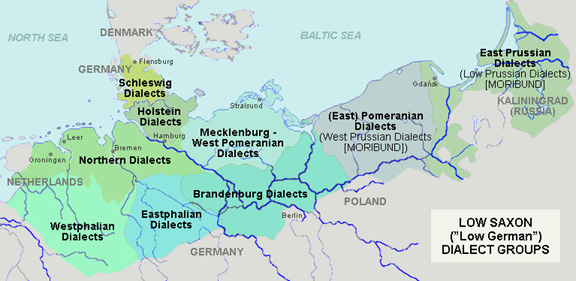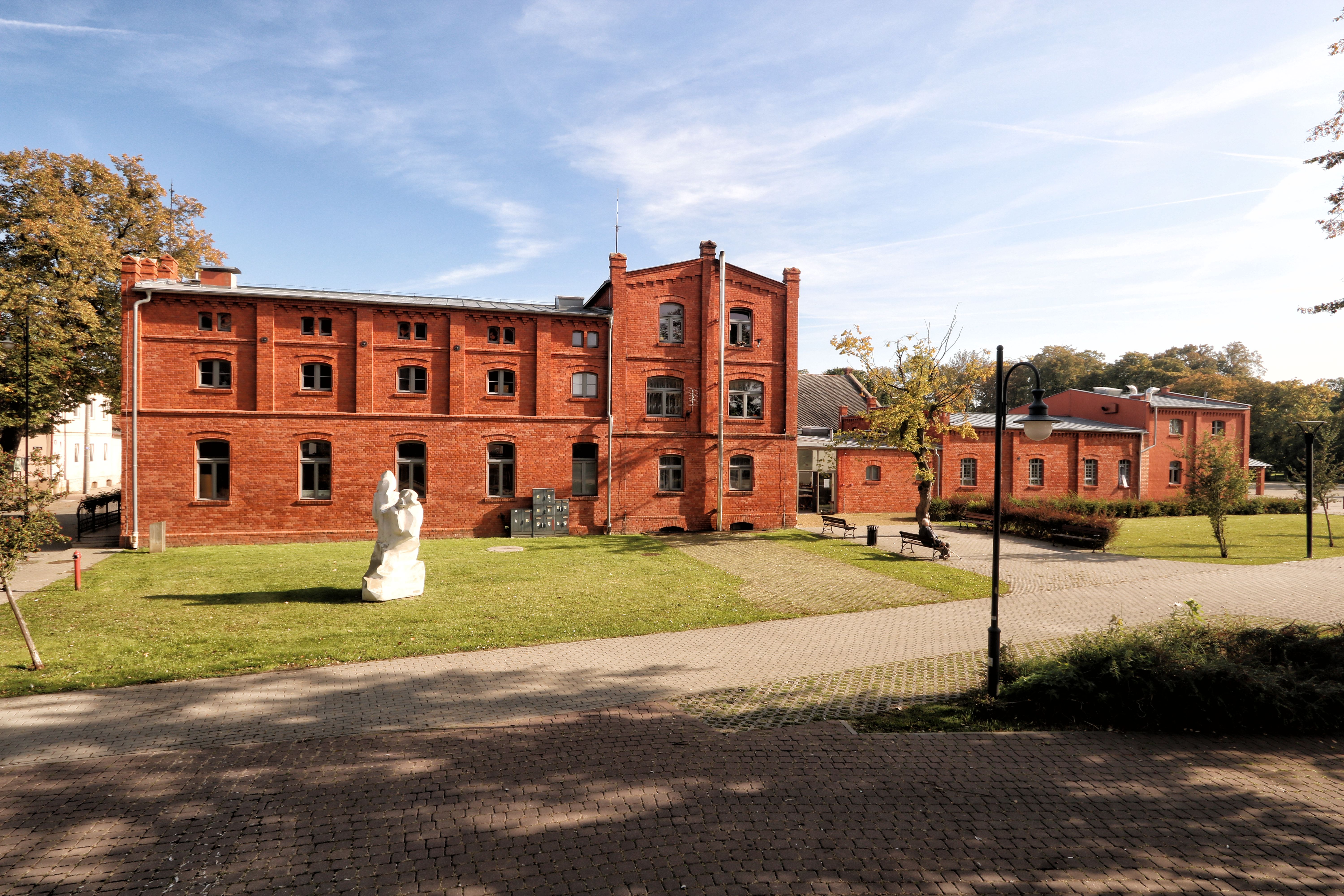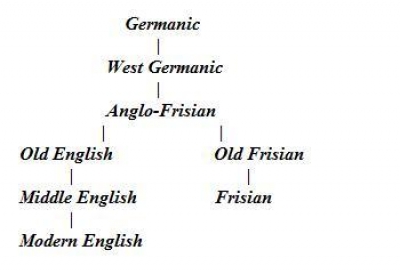|
Werdersch
Werdersch (german: Mundart der Weichselwerder) is a subdialect of Low Prussian, which itself is a subdialect of Low German. This dialect is spoken in Poland and was spoken in the former province of West Prussia. The (''Vistula river islands'') were Żuławy Gdańskie between Wisła Gdańska and Gdańskie Wyżyny and Żuławy Malborskie between Vistula, Szkarpawa, Vistula Lagoon, and Nogat. History Werdersch developed after Dutch-speaking Mennonites from the Netherlands moved in the sixteenth century to the region where Werdersch is spoken. Half of the Dutch there were Mennonites, the other half other Protestants. Though not all were from Holland, they were referred to as Hollanders. German colonists were also referred to as Hollanders. Catherine the Great called Mennonite immigrants from the area to Russia. Werdersch is closely related to Nehrungisch. Plautdietsch was spoken in this area even by non-Mennonites. Many of the Mennonites spoke Low German. Groups of Flemish Menn ... [...More Info...] [...Related Items...] OR: [Wikipedia] [Google] [Baidu] |
Nehrungisch
Nehrungisch is a dialect (''Mundart'') of Low Prussian, belonging to the Low German language variety. It was spoken in East Prussia and West Prussia, in the region around the Vistula Spit (''Frische Nehrung'') near Gdansk. The easternmost locality where this variety was spoken was Narmeln, and it was spoken from Narmeln to Krakau (Krakowiec). The dialect survives in Chortitza- Plautdietsch, a dialect of Low Prussian brought to Ukraine by migrants from the Vistula region. Nehrungisch shares features with Eastern Low Prussian. History Those of the Mennonites from the Vistula lowlands, that originated from the lower part of the Rhine belonged together with those from Gdańsk (Danzig), Elbląg (Elbing), and the Żuławy Gdańskie (Danziger Werder) and entered the larger area in the second half of the 1540s. The Chortitza Colony Plautdietsch language had no major linguistic difference from the original Nehrungisch, which had changed by 1880. By then, the most conspicuous feat ... [...More Info...] [...Related Items...] OR: [Wikipedia] [Google] [Baidu] |
Low Prussian
Low Prussian (german: Niederpreußisch), sometimes known simply as Prussian (''Preußisch''), is a moribund dialect of East Low German that developed in East Prussia. Low Prussian was spoken in East and West Prussia and Danzig up to 1945. In Danzig it formed the particular city dialect of Danzig German. It developed on a Baltic substrate through the influx of Dutch- and Low German-speaking immigrants. It supplanted Old Prussian, which became extinct in the 18th century. Simon Dach's poem '' Anke van Tharaw'' was written in Low Prussian. Classification Low Prussian is a Low German dialect formally spoken in Prussia. It is separated from its only adjacent German dialect, High Prussian, by the Benrath line and the Uerdingen line, the latter dialect being Central German. This was once one of the, if not the hardest linguistic border within the German dialects. Plautdietsch, a Low German variety, is included within Low Prussian by some observers. Excluding Plautdietsch, Low ... [...More Info...] [...Related Items...] OR: [Wikipedia] [Google] [Baidu] |
Poland
Poland, officially the Republic of Poland, is a country in Central Europe. It is divided into 16 administrative provinces called voivodeships, covering an area of . Poland has a population of over 38 million and is the fifth-most populous member state of the European Union. Warsaw is the nation's capital and largest metropolis. Other major cities include Kraków, Wrocław, Łódź, Poznań, Gdańsk, and Szczecin. Poland has a temperate transitional climate and its territory traverses the Central European Plain, extending from Baltic Sea in the north to Sudeten and Carpathian Mountains in the south. The longest Polish river is the Vistula, and Poland's highest point is Mount Rysy, situated in the Tatra mountain range of the Carpathians. The country is bordered by Lithuania and Russia to the northeast, Belarus and Ukraine to the east, Slovakia and the Czech Republic to the south, and Germany to the west. It also shares maritime boundaries with Denmark a ... [...More Info...] [...Related Items...] OR: [Wikipedia] [Google] [Baidu] |
Nogat
The Nogat is a 62 km long delta branch of the Vistula River in northern Poland. Unlike the main river, it does not empty into Gdańsk Bay but rather into the Vistula Lagoon. The Nogat has its origin near the village of Biała Góra as a distributary of the Vistula River. Shortly after the river Liwa flows into the Nogat. Then the river passes Malbork and flows north-east towards Elbląg (but does not reach the city). North-west of Elbląg the Nogat flows into the south-western part of the Vistula Lagoon. The river was located within the Kingdom of Poland until the First Partition of Poland in 1772, when it was annexed by Prussia, and from 1871 it was also part of Germany. During the interwar period, the Nogat formed the boundary between Germany and the Free City of Danzig (Gdańsk). It became again part of Poland following Germany's defeat in World War II World War II or the Second World War, often abbreviated as WWII or WW2, was a world war that last ... [...More Info...] [...Related Items...] OR: [Wikipedia] [Google] [Baidu] |
Nowy Dwór Gdański
Nowy Dwor Gdanski (; ; formerly german: Tiegenhof) is a town in Poland on the Tuja river in the Żuławy Wiślane region, capital of Nowy Dwór Gdański County, located in Pomeranian Voivodeship, with 10,171 inhabitants (2012). History The settlement was established in 1570. Initially owned by the Loitz family, it was later governed by the Wejher and Sobieski noble families, including King of Poland John III Sobieski. Administratively it was part of the Malbork Voivodeship within the Polish Crown. As a result of the First Partition of Poland in 1772 it was annexed by the German state of Prussia. In 1920 it became part of the Free City of Danzig (Gdańsk). On September 1, 1939, the day Germany invaded Poland, causing World War II, the Germans murdered the local Polish customs inspector. The town was then annexed by Nazi Germany. During the war, a subcamp of the Stutthof concentration camp was operated by the Germans in the town. One of the places where the Germans us ... [...More Info...] [...Related Items...] OR: [Wikipedia] [Google] [Baidu] |
Stogi, Pomeranian Voivodeship
Stogi (German ''Heubuden'') is a village in the administrative district of Gmina Malbork, within Malbork County, Pomeranian Voivodeship, in northern Poland. It lies approximately north-west of Malbork and south-east of the regional capital Gdańsk. It is known for its historical Mennonite cemetery founded by Olędrzy, people of Dutch or German ancestry who settled Poland hundreds of years ago. Before 1772, the area was part of the Kingdom of Poland, from 1772 to 1919, Prussia and Germany, from 1920 to 1939, the Free City of Danzig, and, from September 1939 to February 1945, Nazi Germany. The village has a population of around 430 people. Former Mennonite village of Heubuden In Stogi there is the oldest (1768) and one of the biggest Mennonite cemeteries of Poland. Image:Mennonite Graveyard Heubuden 1.JPG, Mennonite graveyard References See also For the history of the region, see ''History of Pomerania The history of Pomerania starts shortly before 1000 AD with o ... [...More Info...] [...Related Items...] OR: [Wikipedia] [Google] [Baidu] |
Żuławki
Żuławki (German ''Fürstenwerder'') is a village in the administrative district of Gmina Stegna, within Nowy Dwór Gdański County, Pomeranian Voivodeship, in northern Poland. It lies approximately north-west of Nowy Dwór Gdański and south-east of the regional capital Gdańsk. Before 1793 the area was part of Polish Royal Prussia, in 1793-1919 Prussia and Germany, 1920-1939 the Free City of Danzig, 1939-45 Nazi Germany. It became Polish in 1945. For the history of the region, see ''History of Pomerania The history of Pomerania starts shortly before 1000 AD with ongoing conquests by newly arrived Polans rulers. Before that, the area was recorded nearly 2000 years ago as Germania, and in modern-day times Pomerania is split between Germany and ...''. The village has a population of 683. References Villages in Nowy Dwór Gdański County {{NowyDwórGdański-geo-stub ... [...More Info...] [...Related Items...] OR: [Wikipedia] [Google] [Baidu] |
Chortitza Colony
Chortitza Colony was a volost Yekaterinoslav Governorate granted to Plautdietsch-speaking Russian Mennonite for colonization northwest of Khortytsia Island and is now part of Zaporizhzhia, Ukraine. Chortitza was founded in 1789 by Mennonite settlers of Dutch ancestry from the Vistula delta and consisted of many villages. It was the first of many Mennonite settlements in the Russian Empire. Because the Mennonites living in these villages emigrated or were evacuated or deported at the end of World War II, or emigrated after the collapse of the Soviet Union no Mennonites are living there today. Background Vistula delta Mennonites, mostly of Dutch descent, had lived in the Vistula delta in the Kingdom of Poland from the middle of 16th century. Because of their fast growing population, finding more arable land was a concern. When the region became part of the Kingdom of Prussia in 1772 through the First Partition of Poland, the Prussian Government enacted a law making it difficult f ... [...More Info...] [...Related Items...] OR: [Wikipedia] [Google] [Baidu] |
Frisian Languages
The Frisian (, ) languages are a closely related group of West Germanic languages, spoken by about 500,000 Frisian people, who live on the southern fringes of the North Sea in the Netherlands and Germany. The Frisian languages are the closest living language group to the Anglic languages; the two groups make up the Anglo-Frisian languages group and together with the Low German dialects these form the North Sea Germanic languages. However, modern English and Frisian are not mutually intelligible, nor are Frisian languages intelligible among themselves, owing to independent linguistic innovations and foreign influences. There are three different Frisian branches, which are usually called the Frisian languages, despite the fact that their so-called dialects are often not mutually intelligible even within these branches. These branches are: West Frisian, which is by far the most spoken of the three and is an official language in the Dutch province of Friesland, where it is spoke ... [...More Info...] [...Related Items...] OR: [Wikipedia] [Google] [Baidu] |
Friesland
Friesland (, ; official fry, Fryslân ), historically and traditionally known as Frisia, is a province of the Netherlands located in the country's northern part. It is situated west of Groningen, northwest of Drenthe and Overijssel, north of Flevoland, northeast of North Holland, and south of the Wadden Sea. As of January 2020, the province had a population of 649,944 and a total area of . The province is divided into 18 municipalities. The capital and seat of the provincial government is the city of Leeuwarden (West Frisian: ''Ljouwert'', Liwwaddes: ''Liwwadde''), a city with 123,107 inhabitants. Other large municipalities in Friesland are Sneek (pop. 33,512), Heerenveen (pop. 50,257), and Smallingerland (includes city of Drachten, pop. 55,938). Since 2017, Arno Brok is the King's Commissioner in the province. A coalition of the Christian Democratic Appeal, the People's Party for Freedom and Democracy, the Labour Party, and the Frisian National Party forms the exec ... [...More Info...] [...Related Items...] OR: [Wikipedia] [Google] [Baidu] |
Anabaptism
Anabaptism (from Neo-Latin , from the Greek : 're-' and 'baptism', german: Täufer, earlier also )Since the middle of the 20th century, the German-speaking world no longer uses the term (translation: "Re-baptizers"), considering it biased. The term (translation: "Baptizers") is now used, which is considered more impartial. From the perspective of their persecutors, the "Baptizers" baptized for the second time those "who as infants had already been baptized". The denigrative term Anabaptist, given to them by others, signifies rebaptizing and is considered a polemical term, so it has been dropped from use in modern German. However, in the English-speaking world, it is still used to distinguish the Baptizers more clearly from the Baptists, a Protestant sect that developed later in England. Compare their self-designation as "Brethren in Christ" or "Church of God": . is a Protestant Christian movement which traces its origins to the Radical Reformation. The early Anabaptist ... [...More Info...] [...Related Items...] OR: [Wikipedia] [Google] [Baidu] |
Catherine The Great
, en, Catherine Alexeievna Romanova, link=yes , house = , father = Christian August, Prince of Anhalt-Zerbst , mother = Joanna Elisabeth of Holstein-Gottorp , birth_date = , birth_name = Princess Sophie of Anhalt-Zerbst , birth_place = Stettin, Pomerania, Prussia, Holy Roman Empire(now Szczecin, Poland) , death_date = (aged 67) , death_place = Winter Palace, Saint Petersburg, Russian Empire , burial_date = , burial_place = Saints Peter and Paul Cathedral, Saint Petersburg , signature = Catherine The Great Signature.svg , religion = Catherine II (born Sophie of Anhalt-Zerbst; 2 May 172917 November 1796), most commonly known as Catherine the Great, was the reigning empress of Russia from 1762 to 1796. She came to power following the overthrow of her husband, Peter III. Under her long reign, inspired by the ideas of the Enlightenment, Russia experienced a renaissance of culture and sciences, which led to the founding o ... [...More Info...] [...Related Items...] OR: [Wikipedia] [Google] [Baidu] |





.jpg)